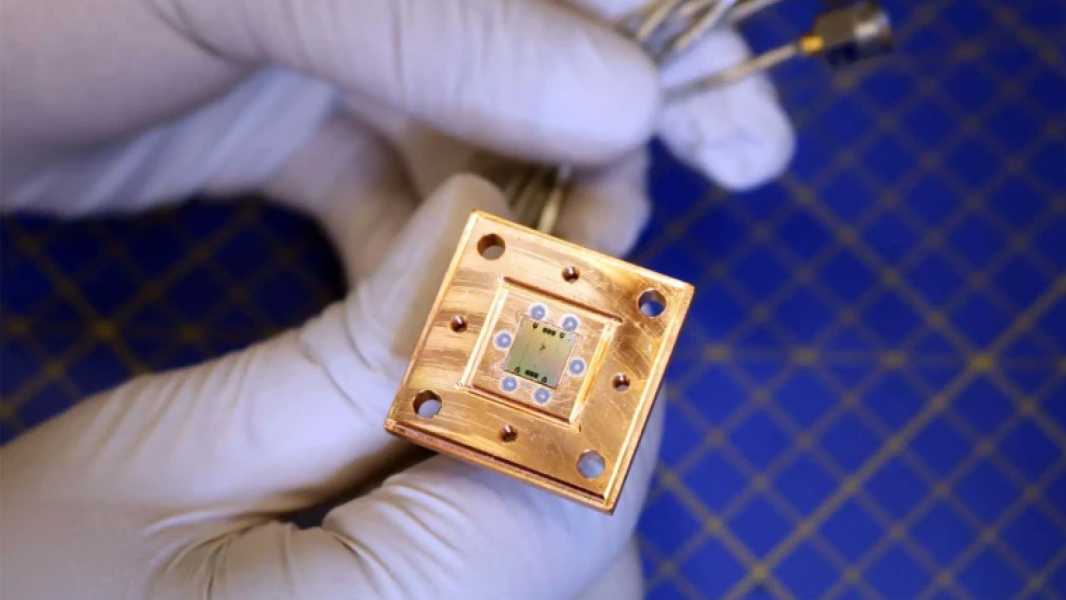
Scientists say the new cooling technology could give quantum computers a “significant performance boost.” (Photo credit: Chalmers University of Technology | Lovisa Hakansson)
Scientists say a new type of self-contained quantum refrigerator could give quantum computers a “significant boost in efficiency” and improve their reliability.
In a study published Jan. 9 in the journal Nature Physics, the scientists successfully cooled a qubit to 22 millikelvins (minus 459.63 degrees Fahrenheit or minus 273.13 degrees Celsius) using a quantum refrigerator that uses microwave “thermal baths.” That’s the lowest temperature ever achieved by a qubit.
“This opens up the possibility of more reliable and error-free quantum computing that requires less hardware,” said lead author Amir Ali, a quantum technology expert at Chalmers University of Technology in Sweden.
Quantum computers require cooling to extremely low temperatures so that scientists can harness the subtle quantum properties and perform calculations, since even the slightest environmental influences can “spoil” their quantum state, causing errors. This is especially important for the superconducting qubits used in chips like IBM’s 1,000-qubit Condor, which must operate at temperatures close to absolute zero (0 K, minus 459.67 F, or minus 273.15 C) to maintain stability.
Cooling qubits to temperatures close to absolute zero puts them into a state with the lowest possible energy, known as the “ground state.” In this state, qubits have a much better chance of retaining their quantum properties long enough to perform accurate calculations.
The new system complements traditional dilution refrigerators, which use helium to absorb heat during the dilution process and can lower the temperature of qubits to about 50 mK, adding to the cooling of qubits rather than replacing them entirely.
This is achieved by using energy from heat reservoirs created using microwave radiation, which is then transferred to one of the quantum refrigerator's two qubits.
“Energy from the thermal environment passing through one of the two qubits of the quantum refrigerator moves heat from the target qubit to the second, colder qubit. This cold qubit is thermalized in the cold environment, where the heat from the target qubit is eventually dumped,” explained study co-author Nicole Junger Halpern, an associate professor of physics and IPST at the University of Maryland.
Using this method, the scientists increased the probability that a qubit would be in its ground state before calculations to 99.97%.
Ali noted that this compares to probabilities between 99.8% and 99.92% achieved with previous approaches. “This may seem like a small difference, but when you do a lot of calculations, it translates into a significant improvement in the performance of quantum computers,” he added.
And, unlike quantum dilution refrigerators, which are extremely complex and difficult to scale up, the new thermally driven system is self-contained, meaning it requires no external control once it is up and running. The results exceeded the researchers’ initial expectations.
“Our work may represent the first demonstration of a self-contained quantum thermal machine performing a useful task,” study co-author Simone Gasparinetti, an associate professor in the Department of Quantum Technologies at Chalmers University of Technology, added in a statement. “We initially viewed this as a proof of concept, so we were pleasantly surprised to find that its performance outperformed all existing reset protocols for cooling qubits to record-low temperatures.”
TOPICS quantum computers
Sourse: www.livescience.com





